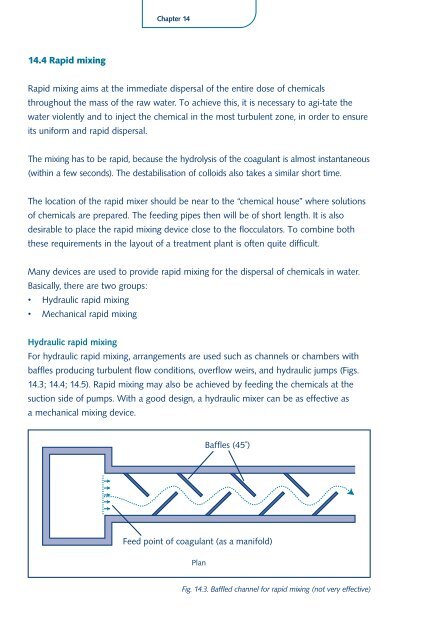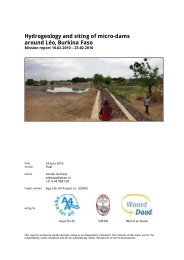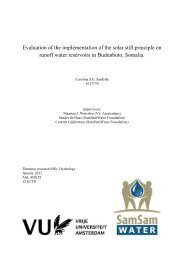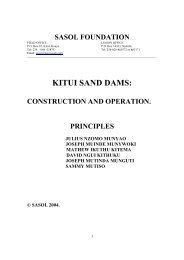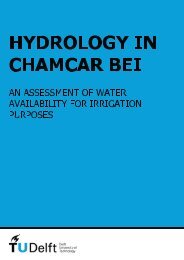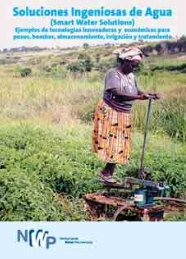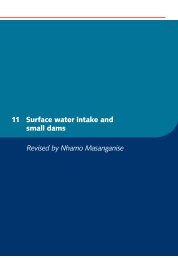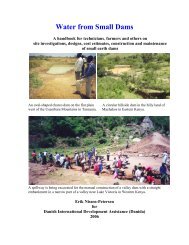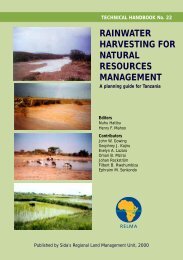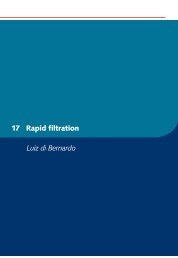Coagulation and flocculation - SamSamWater
Coagulation and flocculation - SamSamWater
Coagulation and flocculation - SamSamWater
Create successful ePaper yourself
Turn your PDF publications into a flip-book with our unique Google optimized e-Paper software.
Chapter 1414.4 Rapid mixingRapid mixing aims at the immediate dispersal of the entire dose of chemicalsthroughout the mass of the raw water. To achieve this, it is necessary to agi-tate thewater violently <strong>and</strong> to inject the chemical in the most turbulent zone, in order to ensureits uniform <strong>and</strong> rapid dispersal.The mixing has to be rapid, because the hydrolysis of the coagulant is almost instantaneous(within a few seconds). The destabilisation of colloids also takes a similar short time.The location of the rapid mixer should be near to the “chemical house” where solutionsof chemicals are prepared. The feeding pipes then will be of short length. It is alsodesirable to place the rapid mixing device close to the flocculators. To combine boththese requirements in the layout of a treatment plant is often quite difficult.Many devices are used to provide rapid mixing for the dispersal of chemicals in water.Basically, there are two groups:• Hydraulic rapid mixing• Mechanical rapid mixingHydraulic rapid mixingFor hydraulic rapid mixing, arrangements are used such as channels or chambers withbaffles producing turbulent flow conditions, overflow weirs, <strong>and</strong> hydraulic jumps (Figs.14.3; 14.4; 14.5). Rapid mixing may also be achieved by feeding the chemicals at thesuction side of pumps. With a good design, a hydraulic mixer can be as effective asa mechanical mixing device.Fig. 14.3. Baffled channel for rapid mixing (not very effective)303


